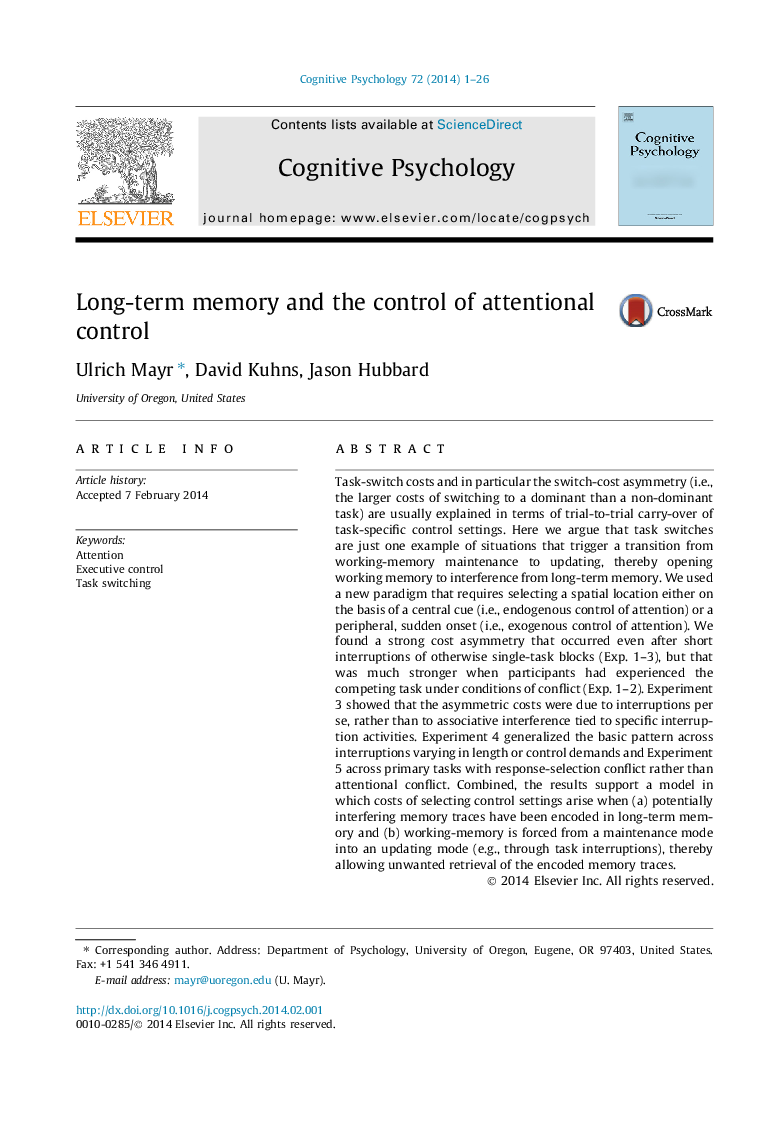| Article ID | Journal | Published Year | Pages | File Type |
|---|---|---|---|---|
| 7272795 | Cognitive Psychology | 2014 | 26 Pages |
Abstract
Task-switch costs and in particular the switch-cost asymmetry (i.e., the larger costs of switching to a dominant than a non-dominant task) are usually explained in terms of trial-to-trial carry-over of task-specific control settings. Here we argue that task switches are just one example of situations that trigger a transition from working-memory maintenance to updating, thereby opening working memory to interference from long-term memory. We used a new paradigm that requires selecting a spatial location either on the basis of a central cue (i.e., endogenous control of attention) or a peripheral, sudden onset (i.e., exogenous control of attention). We found a strong cost asymmetry that occurred even after short interruptions of otherwise single-task blocks (Exp. 1-3), but that was much stronger when participants had experienced the competing task under conditions of conflict (Exp. 1-2). Experiment 3 showed that the asymmetric costs were due to interruptions per se, rather than to associative interference tied to specific interruption activities. Experiment 4 generalized the basic pattern across interruptions varying in length or control demands and Experiment 5 across primary tasks with response-selection conflict rather than attentional conflict. Combined, the results support a model in which costs of selecting control settings arise when (a) potentially interfering memory traces have been encoded in long-term memory and (b) working-memory is forced from a maintenance mode into an updating mode (e.g., through task interruptions), thereby allowing unwanted retrieval of the encoded memory traces.
Related Topics
Life Sciences
Neuroscience
Cognitive Neuroscience
Authors
Ulrich Mayr, David Kuhns, Jason Hubbard,
